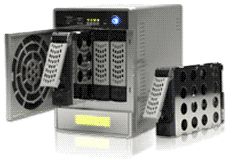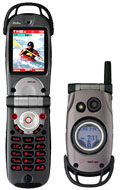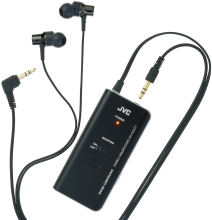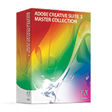Our Digital Life
Consumers love portable devices and digital media -- and this excitement is demonstrated by the annual DigitalLife show, returning to the Javits Center in New York on September 27 - 30, 2007. Plus, it's joined by DigitalLife Chicago, June 8 - 10, 2007 -- www.digitallife.com.

Last year's New York show in mid-October was the third annual, and was again crowded with some 50,000 kids, families, and tech fans of all persuasions.
Key trends for the 2006 show included mobility and gaming, plus an emphasis on security and safety for home computing. But the real action was on the show floor, with the crowds visiting booths exploring hot areas including PCs, digital imaging, mobile media, storage, and communications.
However, content and delivery were trumped by fashion and flash in the large Accessories Zone area. And all this paled in comparison to the excitement of gaming -- which took up easily a third of the show floor.
The bottom line is not just that it's a new world out there; it is a very different audience. Our baby boomer perceptions are being outmoded by the gamer generation, as described by John Beck and Mitchell Wade in their book, Got Game: How the Gamer Generation is Reshaping Business Forever (hardcover at Amazon.com).
Yes, gaming is the formative experience of this new generation -- to the extent that rock and roll was to the baby boomers. (Mario and Sonic now trump the Beatles and the Rolling Stones!)
Full Article: Our Digital Life

 Thanks to the extensive review by Brian Dipert on his
Thanks to the extensive review by Brian Dipert on his 

 To check out mobile Internet on my laptop,
To check out mobile Internet on my laptop,  Here's something different to combine the rugged lifestyle with all those cool wireless phone services -- camera, mobile Internet, video and audio downloads, wireless navigation, and more -- the
Here's something different to combine the rugged lifestyle with all those cool wireless phone services -- camera, mobile Internet, video and audio downloads, wireless navigation, and more -- the  These are rated to cancel up to 80% of the background noise (more than 14dB at 120Hz), in combination with a tight seal from the earpieces. As a bonus, they work fine as headphones even when unpowered, and include a helpful Monitor switch to turn off audio playback so you can listen to important announcements.
These are rated to cancel up to 80% of the background noise (more than 14dB at 120Hz), in combination with a tight seal from the earpieces. As a bonus, they work fine as headphones even when unpowered, and include a helpful Monitor switch to turn off audio playback so you can listen to important announcements. This is a huge upgrade of the Adobe Creative product line, with design and development tools spanning the creative workflow -- to create, deliver, and play back -- across print, web, video, interactive and mobile.
This is a huge upgrade of the Adobe Creative product line, with design and development tools spanning the creative workflow -- to create, deliver, and play back -- across print, web, video, interactive and mobile.